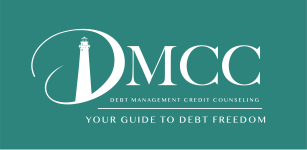DMCC’s Foreclosure Prevention Program is a free program for consumers suffering from financial hardship and having a difficult time repaying their home mortgage. This program has been designed to identify available solutions for consumers to avoid foreclosure which meet their personal goals, and assist consumers with obtaining a loan modification if it is a recommended solution. Consumers who have already received a notice with Date of Sale are recommended to seek legal counsel for assistance.
Assessment and Action Plan
The first step in this program is to assess the consumer’s personal situation and goals, and develop a written action plan with recommended solutions for consumer to avoid foreclosure. This step requires the submission of specific information to DMCC by the consumer, including personal information regarding the consumer, their existing mortgage, the facts and circumstances of their hardship, their monthly income and expenses, and their goals regarding the mortgaged home. Information may be submitted in person, over the telephone, or by completing forms provided by DMCC for this purpose.
Following a counseling session with a certified counselor, each consumer will be provided a written action plan with recommendations to avoid foreclosure and mitigate the potential loss from non-payment. Possible recommendations are as follows:
Refinance – The consumer may be able to simply refinance the mortgage loan with their lender or an alternative lender to effectively repay the existing loan in a lump sum.
Repayment Plan – The mortgage lender may allow the consumer to resume making regular monthly payments, in addition to a portion of the past due amount, until the loan is brought current.
Forbearance – A forbearance agreement will aid the consumer through a temporary financial setback by addressing the reasons for default and solutions to bring the account current. The lender agrees to stop any pending or ongoing foreclosure and may agree to reduce, or even suspend, mortgage payments for a short period to allow the consumer sufficient time to bring the loan current.
Loan Modification – If the consumer can make payments on the loan, but either does not have the funds to bring the loan current or cannot afford the existing monthly payment, the lender may agree to change some of the terms of the original loan. Below are some of the methods used by lenders to modify loan terms:
- Adding the missed payments to the existing loan balance
- Lowering or fixing the interest rate
- Extending the length of the loan
- Deferring the repayment of a portion of the principal
Advance or Partial Claim – With this option, funds are advanced to bring your mortgage current. A second lien is held on your property in the amount of the advance. You will have to sign a Promissory Note, which means your delinquent payments are due and payable at the termination of your first mortgage. Your account is immediately brought current upon approval of Partial Claim (also called Second Lien Advance).
Deed-in-Lieu – The lender may agree to allow the consumer to voluntarily turn over the deed to the property and forgive the debt. Although this option sounds simple, the consumer usually must attempt to sell the home for its fair market value for a set period of days before the lender will consider this option. This option may not be available if there are secondary liens on the property.
Short Sale – The lender may be willing to accept less than the balance owed on a mortgage and forgive the remaining amount owed if proceeds from the sale of the property would be less than the value of the loan. Approval of a short sale may also be required from junior lien holders, such as for second mortgages or tax liens.
Home Equity Conversion Mortgages (aka Reverse Mortgages) – Senior citizens who have a significant amount of equity in their homes may qualify for a reverse equity mortgage. The lender makes either a lump sum payment or provides a monthly payment stream that draws down the equity in the home. There are very specific age and equity requirements for this loan type.
If the initial assessment and action plan indicate that consumer may qualify for a loan modification, DMCC will prepare and submit a loan modification package to the consumer’s mortgage lender on their behalf. This step requires the submission of detailed information and supporting documents to DMCC by the consumer, including mortgage documents, bank statements, tax returns, paycheck stubs, and more. Once the loan modification is submitted to the mortgage lender, it may take several months before it is processed and completed.
Consumers interested in obtaining this free service should contact DMCC by calling (866) 618-3328 and asking to speak with a housing counselor, or by emailing their request to contact@dmcconline.org.
